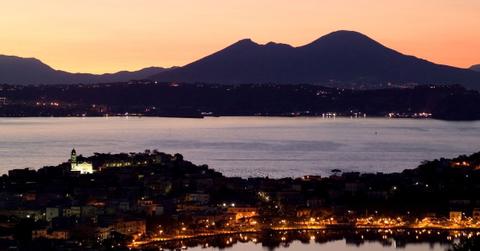Volcanic 'Megabeds' in Mediterranean Can Help Predict Catastrophic Events: Study

Scientists have discovered massive beds of volcanic material off the coast of Italy that shed new light on catastrophic events that seem to hit the region every 10,000 to 15,000 years.
Scientists have found massive ancient beds of volcanic material hidden at the bottom of the Mediterranean Sea that may help predict future disasters.
These "megabeds" shed new light on recurring catastrophic events, like supervolcano eruptions, that seem to hit the region every 10,000 to 15,000 years, Knewz.com reported.
Researchers made the discovery off the coast of Italy at the bottom of the Tyrrhenian Sea — part of the Mediterranean — near a large underwater volcano, according to the study published in the scientific journal Geology.
Earlier studies hinted at something beneath the ocean's surface in the area, but low-resolution images made it difficult to identify.
The new study used enhanced imaging techniques, which revealed four megabeds ranging in thickness from 33 to 82 feet. The oldest one formed 39,000 years ago when the supervolcano Phlegraean Fields erupted.
A second megabed with a shorter timespan between its layers likely came from the same eruption, researchers said in the study.
A third, around 18,000 years old, is believed to have come from a volcanic ash structure called the Neapolitan Yellow Tuff, which also resulted from a Phlegraean Fields eruption.
- Groundbreaking Revelation: Discovery of Tectonic Plates 'Unzipping' Beneath Tibet May Help Predict Future Earthquakes
- What Lies Beneath: NASA Scientist Believes Aliens May Have Found 'Perfect' Hiding Spot in Earth's Oceans
- Global Threat: Russia Insider Warns West of 'World War Using Nuclear Weapons' Amid Escalating Support for Ukraine
The fourth and most recent megabed documented in the study resulted from a less powerful eruption at Phlegraean Fields, and is likely about 8,000 years old, scientists said.
The term "supervolcano" is used to describe a volcano that has had an eruption at the highest magnitude of 8 on the explosivity scale, and one that has erupted more than 240 cubic miles of material, according to The U.S. Geological Survey. The Phlegraean Fields supervolcano has had a long history of activity.
Experts estimate these major eruptions occur every 10,000 to 15,000 years, but scientists continue to refine measurements to gain a more accurate understanding of future risks.
Never miss a story — sign up for the Front Page Detectives newsletter. Be on the scene the moment news breaks.
The study's lead author Derek Sawyer of the University of Ohio said while his team's findings significantly contribute to the understanding of volcanic hazards, more precise data is needed to predict future catastrophic events.
"It’s not as constrained as we would like it to be,” he said, according to Live Science. "That whole field is still active, there's still a lot of concern about the future of that, so it's certainly potentially possible that it could happen again."
News of the study came as evacuations were ordered in Iceland, with the country bracing for a possible volcanic eruption. Experts said a series of thousands of earthquakes over the past several weeks indicated the Fagradalsfjall volcano was likely to erupt.
Become a Front Page Detective
Sign up to receive breaking
Front Page Detectives
news and exclusive investigations.
